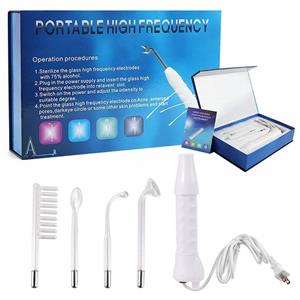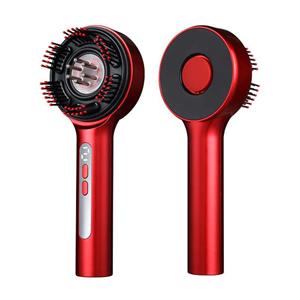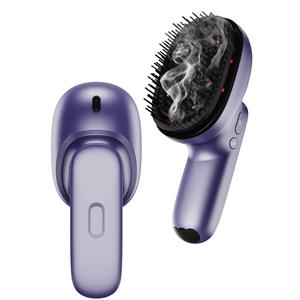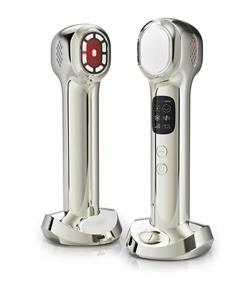EMS vs RF - Which Skin Tightening Technology Reigns Supreme for Your Beauty Routine?
In the ever-evolving world of at-home beauty devices, two technologies have emerged as front-runners for skin tightening and anti-aging: EMS and RF. As skincare enthusiasts and tech-savvy consumers seek effective alternatives to professional treatments, the debate rages on—which is better, EMS or RF? To help you navigate this dilemma, we’ll dissect their mechanisms, benefits, and ideal use cases, while also introducing a cutting-edge device that merges both for optimal results.
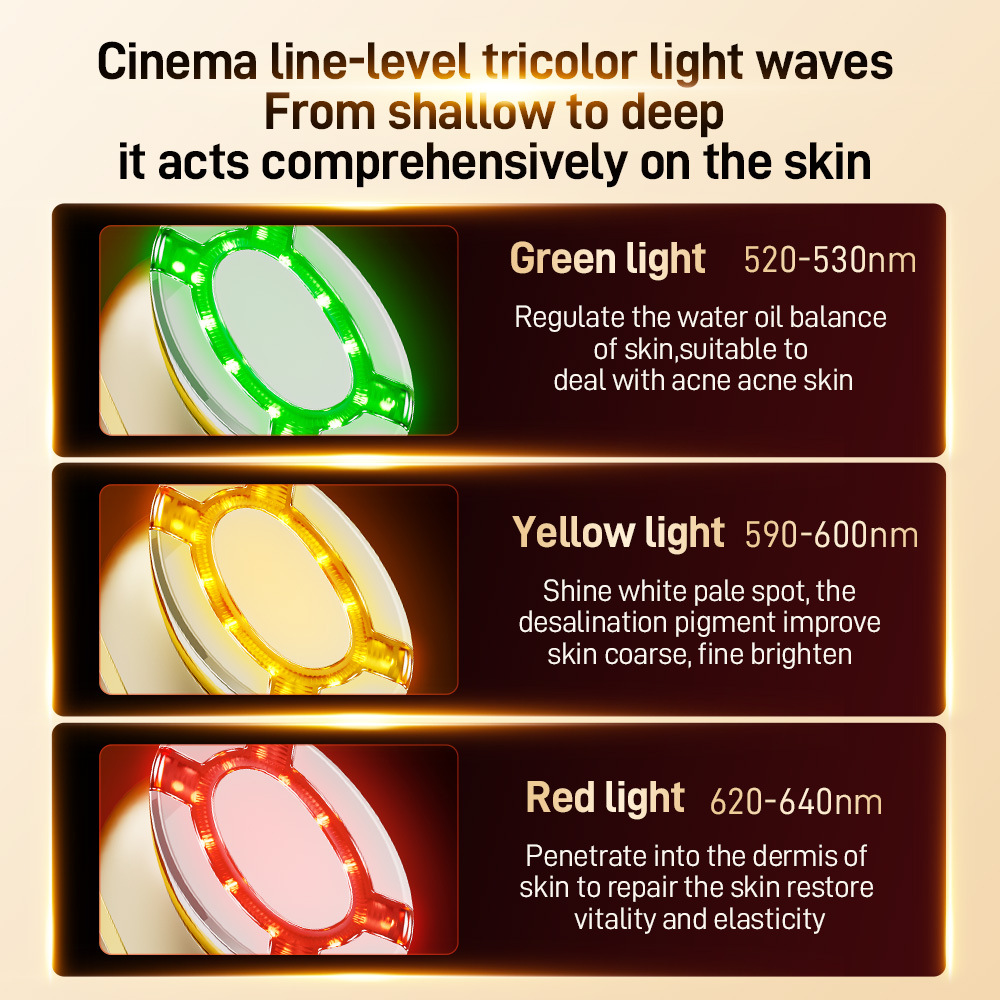
Which is better, EMS or RF?
Understanding EMS: The Muscle-Engaging Tightener
EMS, or Electrical Muscle Stimulation, works by sending low-level electrical pulses to facial muscles. These pulses mimic the body’s natural muscle contractions, forcing muscles to “work out” even when you’re not actively exercising them. For areas like jowls, EMS can be a game-changer.
Understanding RF: The Collagen-Boosting Powerhouse
RF, or Radio Frequency, operates on a different principle. It delivers controlled heat deep into the dermis (the skin’s middle layer), where collagen and elastin fibers reside. This heat triggers the body’s natural wound-healing response, prompting new collagen to form. The result? Gradual skin tightening, reduced fine lines, and improved skin texture.
The Best of Both Worlds: RF+EMS LED Therapy
For those unwilling to choose between muscle toning and collagen stimulation, our RF+EMS LED Therapy Skin Tightening Device is the answer. It combines RF’s deep dermal heating (200K RF energy, 36-42℃ temperature control) with EMS muscle activation, plus LED light therapy (red, green, yellow) for multi-layered skincare.
RF: Boosts collagen to tighten skin from within.
EMS: Tones facial muscles for a lifted, defined look (perfect for jowls).
LED Therapy: Red light repairs dermis and restores elasticity; green light balances oil and targets acne; yellow light brightens and fades pigmentation.
Do Home RF Skin Tightening Machines Work
(1)How Home RF Devices Work
RF technology heats the dermis (skin’s middle layer) to 36-42℃ (like our RF+EMS LED Therapy Skin Tightening Device, which hits 200K RF energy). This controlled heat triggers collagen production—the protein responsible for skin firmness and elasticity. Over weeks of consistent use (2-3 times per week), new collagen fibers form, gradually tightening loose skin and softening fine lines.
(2)Efficacy: Home RF vs Professional RF
Professional RF treatments (like Thermage or Ultherapy) use higher energy levels and deeper penetration, delivering more dramatic results in fewer sessions. However, they come with a hefty price tag ($500-$3,000 per session) and downtime.
Home RF devices, while less intense, offer cumulative results with regular use. They’re ideal for:
Mild to moderate skin laxity.
Maintenance between professional treatments.
Targeting specific areas (jawline, cheeks, forehead).
Our RF+EMS LED Therapy device, for example, combines RF with EMS (Electrical Muscle Stimulation) and LED light therapy. The RF component tightens skin, EMS tones facial muscles (perfect for jowls), and LED addresses surface issues like acne or pigmentation—making it a multi-tasker for holistic skin health.
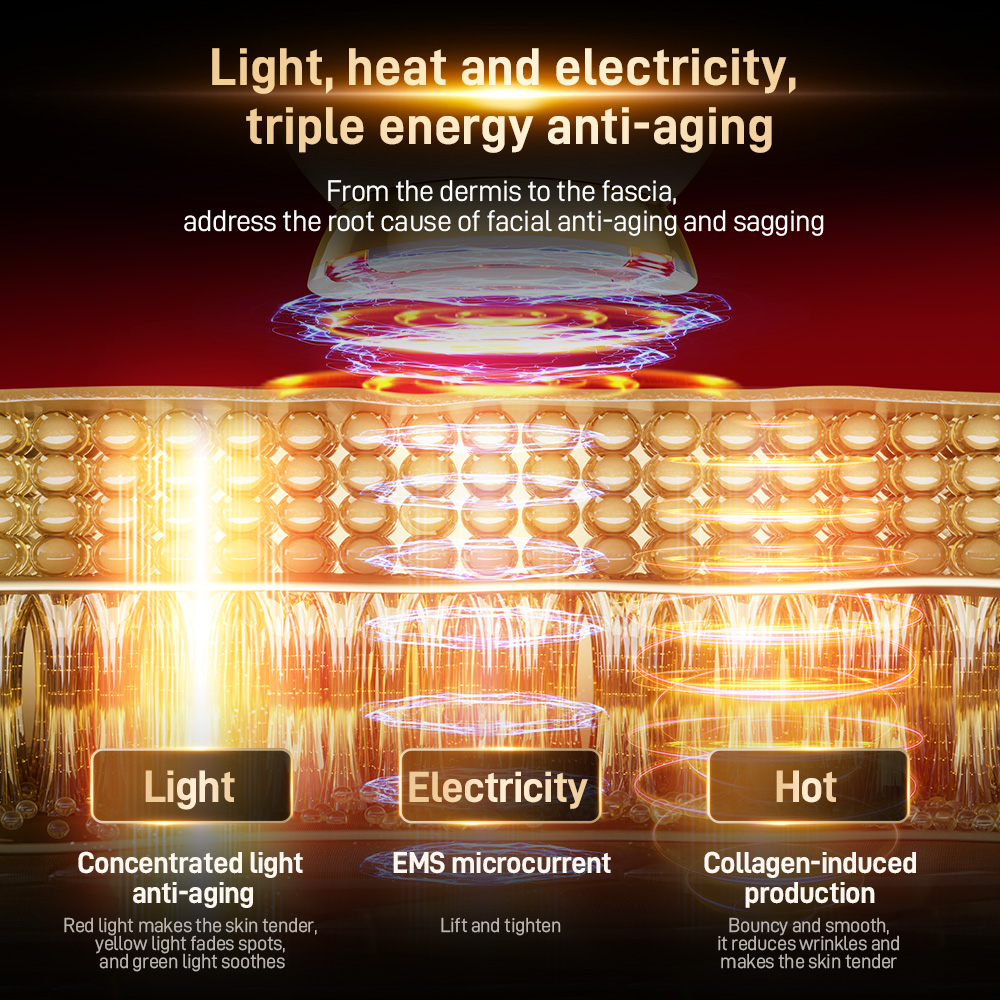
Does EMS Tighten Jowls?
(1) How EMS Targets Jowls
EMS sends low-level electrical pulses to facial muscles, causing them to contract and relax. For jowls, this means activating the platysma (the thin muscle along the jaw and neck) and other facial muscles responsible for jawline definition. Just like how working out tones your biceps, consistent EMS use tones these facial muscles, lifting and firming sagging jowls over time.
(2)What to Expect From EMS for Jowls
Timeline: Noticeable muscle tone and jawline definition can appear in 4-6 weeks with 2-3 weekly sessions.
Results: EMS tightens jowls by strengthening the underlying muscles, creating a more sculpted look. However, it doesn’t address skin laxity or collagen loss—so for very loose skin, it works best when paired with a collagen-stimulating treatment like RF.
What is the strongest skin tightening procedure?
Ranking the Strongest Skin Tightening Procedures
1. Surgical Lift (Facelift/Neck Lift)
How It Works: Removes excess skin and tightens underlying muscles.
Strength: The most dramatic, long-lasting results (5-10 years).
Cons: High cost ($7,000-$20,000), significant downtime (2-4 weeks), and surgical risks.
2. In-Office RF (e.g., Thermage, Ultherapy)
How It Works: Delivers high-energy RF deep into the dermis to stimulate collagen.
Strength: Noticeable tightening in 1-3 sessions, with results lasting 1-2 years.
Cons: Costly ($500-$3,000 per session), minimal downtime (1-3 days), and temporary redness.
3. Laser Resurfacing (e.g., CO2 Laser)
How It Works: Removes the outer skin layer and heats the dermis to boost collagen.
Strength: Effective for severe sagging and deep wrinkles.
Cons: High cost ($1,000-$5,000 per session), significant downtime (1-2 weeks), and risk of hyperpigmentation.
4. At-Home RF+EMS Devices (e.g., Our RF+EMS LED Therapy Tool)
How It Works: Combines RF (200K energy, 36-42℃ temperature) for collagen, EMS for muscle toning, and LED light therapy for surface concerns.
Strength: Cumulative results with consistent use, cost-effective, and zero downtime.
Cons: Results are milder than surgical or in-office treatments, requiring ongoing use.

Conclusion
In the field of skin tightening, EMS and RF are not competitive but complementary effective technologies. EMS excels in facial muscle shaping, especially in tightening jowls and defining the jawline. RF, on the other hand, focuses on collagen regeneration in the dermis, making it a powerful tool for improving skin laxity and reducing fine lines. If you want to combat aging comprehensively, devices like the RF+EMS LED Therapy Skin Tightening Device mentioned in the article, which combine the advantages of both and are also equipped with LED light therapy, are excellent choices. At the same time, regardless of the method chosen, post-treatment care (such as skincare and sun protection after RF) should be noted, and the most suitable solution should be determined based on your own needs (whether you pursue surgical-level effectiveness or convenient at-home care) to achieve the desired results in your skin tightening journey.

